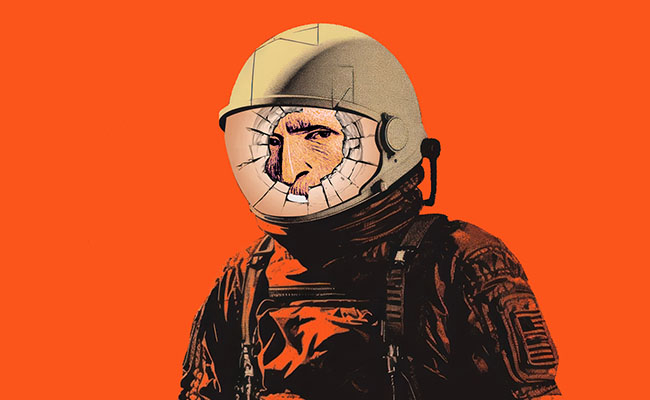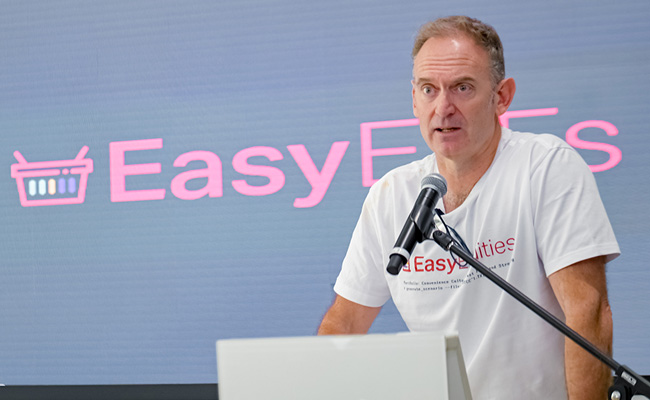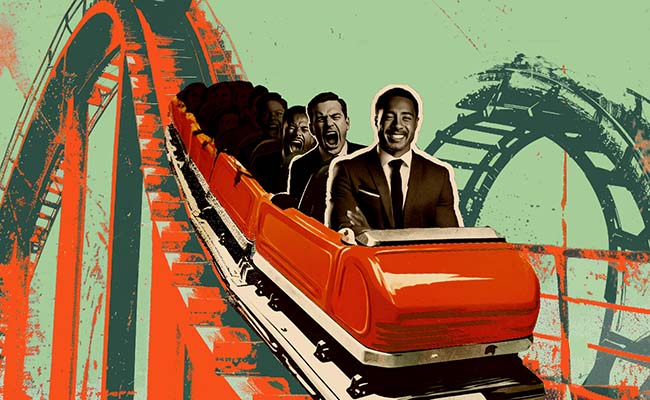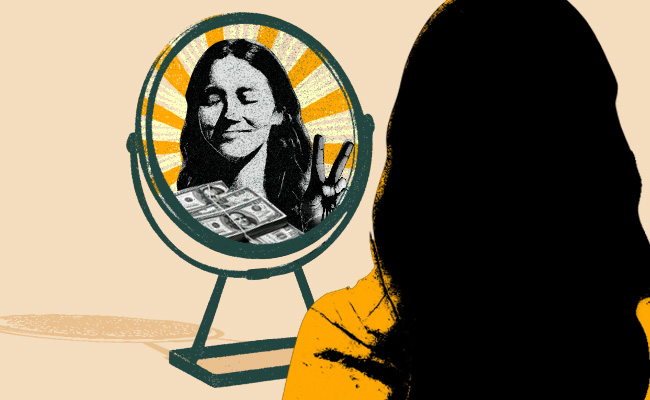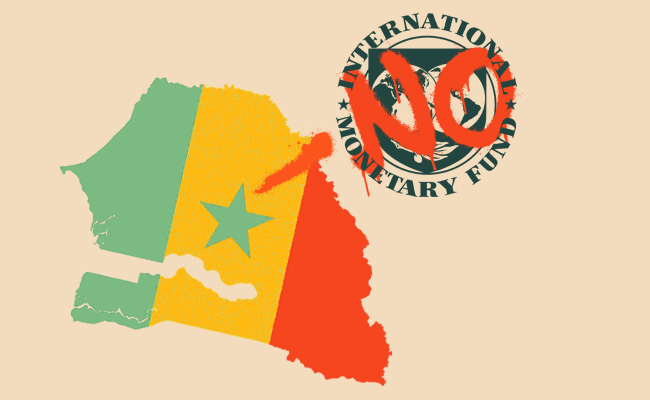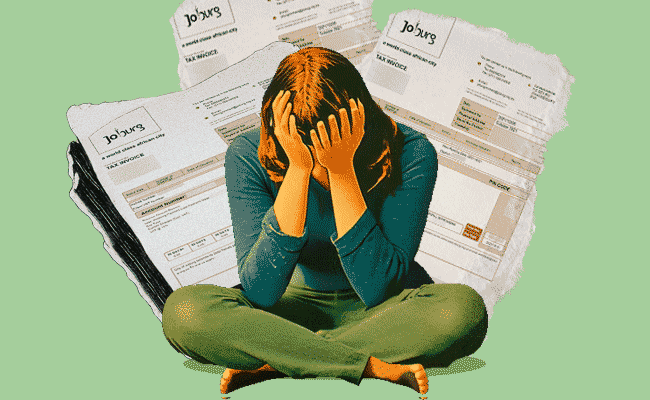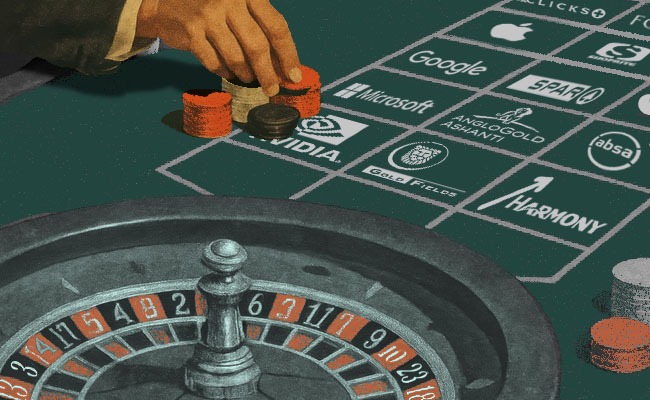We can split atoms, land rovers on Mars, and sequence the human genome. Yet let markets drop a few points and even seasoned professionals panic and reach for the “sell” button.
The problem isn’t intelligence. It’s that our instincts were built for surviving on the savannah, not the stock market. What once kept our ancestors alive now quietly robs modern investors of wealth.
The behaviour gap
Decades of research into investment decisions has shown that the average investor forgoes about three percentage points per year relative to what they’d get by simply getting fully invested into a basic but diversified portfolio and leaving it alone. That might sound small, but compounded over decades it can mean hundreds of thousands missing from your retirement pot.
This shortfall has a name: the behaviour gap. And it doesn’t come from markets being cruel, or products being poor. It comes from us.
More specifically, from two very human mistakes:
Doing too little. This is the biggest culprit, usually making up about two-thirds of the 3% cost. It’s the money we leave sitting in cash year after year because it feels safe. But “safe” is often an illusion. Over time, even a basic diversified investment portfolio has earned about 4%-5% more per year than cash. If half your wealth stays uninvested, that’s 2%-2.5% in lost returns. Every single year. What feels like protection is often the costliest decision of all.
Doing too much with the too little we do invest. The rest of the cost comes once we finally get into markets – and then can’t help ourselves. We trade too often, sell at the bottom, chase hot stories and familiar names, over-concentrate on home markets or favourite brands, and generally forget that boredom is a virtue in investing. Investors in March 2020 who panicked and sold as Covid spread locked in losses that long-term holders recovered within months. Meme-stock manias showed the other side: buying for the story, not the substance, and often being the last one holding the bag.
Doing nothing requires only blissful ignorance. The fact that most investors underperform even that says everything about how powerfully our emotions shape investing.
Add the two together, and you get the behaviour gap: the missing 3% a year.
A personal confession
I wish I could say I’ve been immune to this. After all, by the time of the global financial crisis of 2008 I’d already spent years specialising in investment decision-making — even advising advisers on how to help their clients avoid these mistakes. Surely I’d be the last person to fall into them?
Wrong.
For years, I thought the big danger was making poor investment choices. My “solution” was to avoid making any choices at all. Which meant that while I wasn’t making disastrous bets, I was committing the single biggest behavioural sin: leaving my money uninvested. I wasn’t losing money in bad trades, but by sitting on the sidelines.
I used to congratulate myself for being prudent. I told myself I was simply “waiting for the right time”. In reality, I was paying a very high price for the illusion of safety. I was protecting myself against the small chance of making a bad investment, while guaranteeing the big cost of not investing at all.
What finally jolted me was October 2008. Markets were in free fall. Every headline screamed catastrophe. If there was ever a moment when emotions should have paralysed action, this was it.
And that’s when it hit me: if I couldn’t follow my own advice in the depths of the most emotionally fraught moment any of us had lived through, then I had no right to be giving that advice at all.
In that moment, I finally stopped watching and got fully invested. Not because it felt comfortable. It didn’t. But because I realised that comfort was the trap. I had to prove to myself that I could do what I’d spent years telling others to do.
Why comfort beats logic
This is the essence of the behaviour gap. In the moment, our emotional brain screams for comfort: sell when things feel bad, chase what feels safe or familiar, sit on cash to avoid losses. But the comfort we buy today is usually paid for with lower returns tomorrow.
There is nothing “rational” about choosing a theoretically optimal strategy that only a Vulcan like Spock could stick with. The rational choice is the one you can actually implement and live with; the one that gives you the best anxiety adjusted returns.
Lowering risk can reduce anxiety, but it’s often an expensive way of doing so. The smarter approach is to use decision prosthetics – tools, rules and pre-commitments – to reduce anxiety without sacrificing long-term returns.
What this means for you
If you’ve ever sat on too much cash, chased hot stocks, or sold out in a panic, you’re not alone. Every investor wrestles with these instincts. The trick isn’t to eliminate them. You can’t. It’s to accept that you’re human, and then build systems that protect you from yourself.
The real lesson is this: successful investing isn’t about outsmarting the market. It’s about outsmarting yourself.
That means accepting discomfort as part of the journey, putting pre-commitments and rules in place to hold you steady, and measuring success not just by returns, but by how much unnecessary emotional cost you avoided along the way.
The good news
The behaviour gap is real, but it isn’t inevitable. With the right tools, from simple rules to decision prosthetics that take decisions out of the heat of the moment, you can reduce it dramatically.
The best investors aren’t those who outsmart the market, but those who outsmart themselves and stay the course.
If you’d like to go deeper, explore practical tools and understand your own financial personality, you can take my online course: The Art of Behavioural Investing. It’s CPD-accredited, designed for individual investors and advisers alike, and will give you the decision prosthetics you need to close your behaviour gap.
Greg B Davies founded and led the first behavioural finance team in banking globally in 2006, serving as Barclays’ global head of behavioural quant finance for a decade. Since 2017, he has led behavioural innovation at fintech Oxford Risk, developing behavioural technology to enhance financial decision-making. He holds a PhD in behavioural decision theory from Cambridge University and is co-author of ‘Behavioral Investment Management’.
Top image: Rawpixel/Currency collage.
Sign up to Currency’s weekly newsletters to receive your own bulletin of weekday news and weekend treats. Register here.



